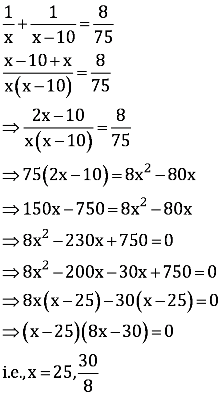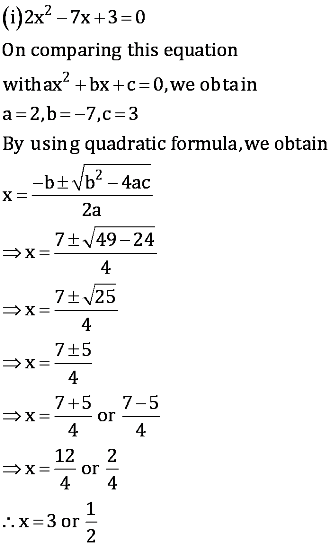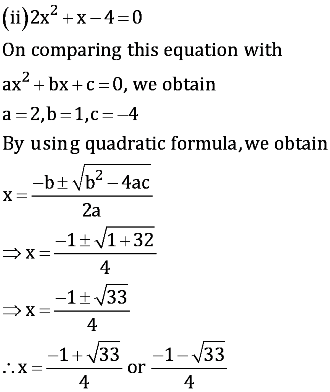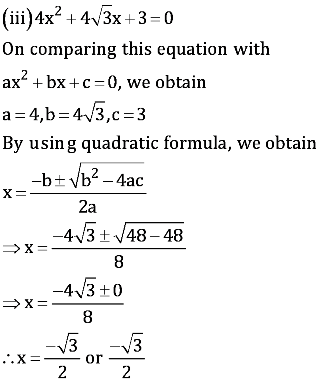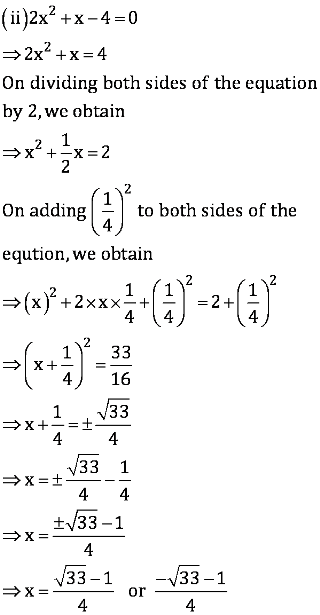Question 2:
Write first four terms of the A.P. when the first term a and the common difference d are given as follows
(i) a = 10, d = 10 (ii) a = − 2, d = 0 (iii) a = 4, d = − 3
(iv) a = − 1 d = 1/2 (v) a = − 1.25, d = − 0.25
Answer:
(i) a = 10, d = 10
Let the series be a1, a2, a3, a4, a5 …
a1 = a = 10
a2 = a1 + d = 10 + 10 = 20
a3 = a2 + d = 20 + 10 = 30
a4 = a3 + d = 30 + 10 = 40
a5 = a4 + d = 40 + 10 = 50
Therefore, the series will be 10, 20, 30, 40, 50 …
First four terms of this A.P. will be 10, 20, 30, and 40.
(ii) a = −2, d = 0
Let the series be a1, a2, a3, a4 …
a1 = a = −2
a2 = a1 + d = − 2 + 0 = −2
a3 = a2 + d = − 2 + 0 = −2
a4 = a3 + d = − 2 + 0 = −2
Therefore, the series will be −2, −2, −2, −2 …
First four terms of this A.P. will be −2, −2, −2 and −2.
(iii) a = 4, d = −3
Let the series be a1, a2, a3, a4 …
a1 = a = 4
a2 = a1 + d = 4 − 3 = 1
a3 = a2 + d = 1 − 3 = −2
a4 = a3 + d = − 2 − 3 = −5
Therefore, the series will be 4, 1, −2 −5 …
First four terms of this A.P. will be 4, 1, −2 and −5.
(iv) a = −1, d = 1/2
Let the series be a1, a2, a3, a4 …
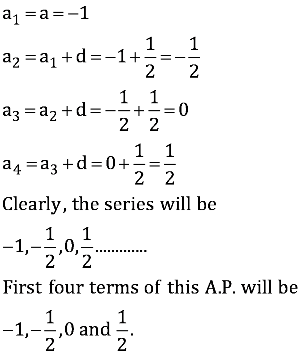
(v) a = −1.25, d = −0.25
Let the series be a1, a2, a3, a4 …
a1 = a = −1.25
a2 = a1 + d = − 1.25 − 0.25 = −1.50
a3 = a2 + d = − 1.50 − 0.25 = −1.75
a4 = a3 + d = − 1.75 − 0.25 = −2.00
Clearly, the series will be 1.25, −1.50, −1.75, −2.00 ……..
First four terms of this A.P. will be −1.25, −1.50, −1.75 and −2.00.











